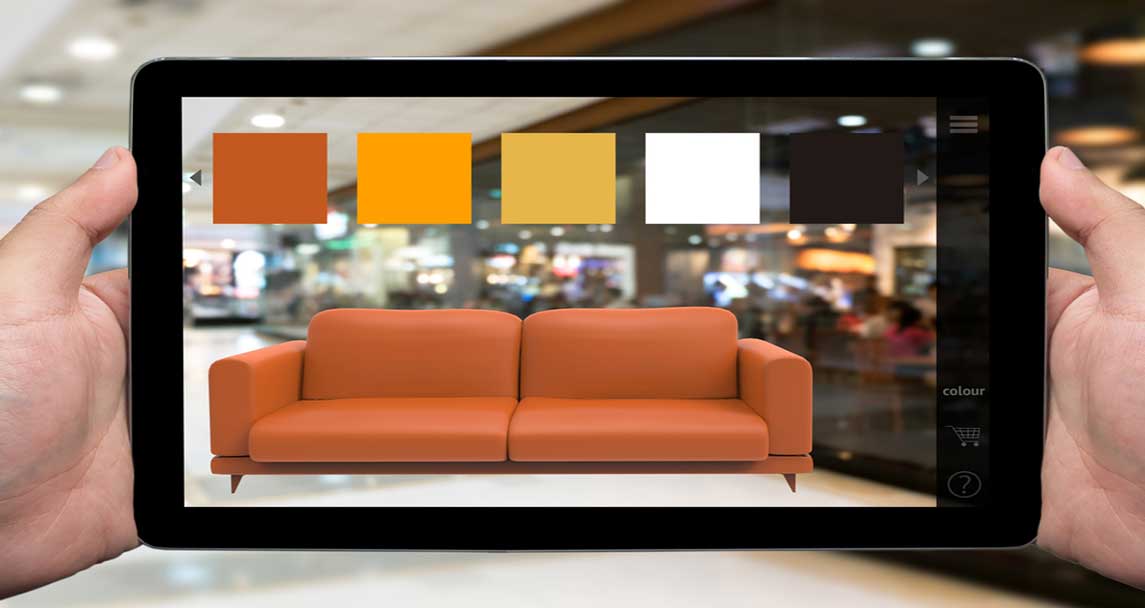As technology continually changes and adapts, so too do the opportunities available for marketers.
In fact, more and more digital platforms are incorporating augmented reality, providing consumers with a more real experience in the online environment.
Although social media marketing platforms such as Instagram, Facebook and even Snapchat have integrated augmented reality into their user experience, the technology had yet to be adopted by mainstream online platforms with an emphasis on the marketing opportunity that augmented reality provides. That was until online e-commerce platform, Shopify recently implemented the revolutionary technology into their services, providing small businesses and large brands with the opportunity to let their online consumers explore seemingly real-life products or experiences prior to purchases.
What is Augmented Reality?
Often confused with virtual reality, augmented reality (AR) involves the process of superimposing images, text, or sound into the world we see. For example, most people would have experienced or at least heard about that Pokémon Go phenomenon, which superimposed images of Pokémon characters on the screen of what users were currently looking at through their camera lens.
While AR adds digital elements to an individual’s reality that they would ordinarily see, by contrast, virtual reality is completely digital environments that users can interact with. Therefore, AR blends the online experience with the real offline world rather than creating a completely artificial, computer-generated environment for users to experience. Evidently, regardless of the method used, both technologies open up a plethora of opportunities for digital marketing purposes and other applications.
Benefits of AR for E-Commerce
The popularity of e-commerce website has grown exponentially in recent years. In fact, according to a 2017 Retail Sales Index Report by National Australia Bank (NAB), Australian consumers spent a total of $1.95 billion per month on online shopping. Not to mention, consumer trend research also demonstrates a 52% year over year increase in mobile shopping.
However, while there has been considerable growth in the online retail marketplace, there are also many barriers to the current Australian e-commerce market that AR applications, such as those implemented by Shopify could benefit.
First and foremost, it has been revealed that as many as 33% of Australian consumers who shop online prefer to purchase from overseas due to the perception that overseas vendors have a better availability of products. However, purchasing products from overseas can potentially be risky, particularly in the popular fashion sector. For example, size conversions often differ amongst store-to-store and more so country-to-country, therefore the lengthy process of waiting for a product from overseas can potentially be disappointing when it wasn’t what the consumer intended.
Not to mention, the returns and exchange process can be a hassle when dealing with national brands, let alone international brands, creating an inconvenience for both consumers and the retail industry should such an issue be encountered. In fact, Shopify themselves identified that online shopping can potentially be detrimental to brands with the prediction that the rate of e-commerce returns will equate to $550 billion by 2020 in the United States. This rate is also growing fast, with Statista stating that e-commerce returns have increased by 94.8% over the most recently measured 5-year period. Meanwhile, physical bricks and mortar stores have a significantly lower return rate that the Wall Street Journal places at the 8-10%.
As e-commerce is an entirely online experience until the product arrives at the door, or a consumer heads in-store, it is no surprise that statistics demonstrate a higher return rate on online purchases. However, the increasing amount of online returns can be detrimental for online brands, aggressively attacking their profit margins and impacting conversion rates for even the most successful businesses.
AR technology has the ability to rectify such issues, particularly in the global e-commerce marketplace. AR mimics the try before you buy environment that bricks and mortar stores do so well and by providing the consumer with an opportunity to interact with a digital, but extremely realistic product in their real-life environment, return rates can potentially be reduced. For example, Shopify notes that their AR feature which is accessible to businesses of all sizes provides consumers with the ability to get to know the products better before they purchase it or walk into a physical store.
Ultimately, AR technology facilitates the consumer in making more informed purchases in the online environment in order to avoid the unexpected. As a majority of consumers actually never step into a store to examine the product more closely, this informed decision and experimentation can too reduce return rates for brands and have a more positive impact on sales and conversions.
At RGC Digital Marketing, we are an award-winning digital marketing agency based in Sydney with extensive experience in e-commerce web design services and mobile application development. In fact, we recently developed an award-winning virtual reality mobile app for Mitsubishi Electric, providing an innovative online experience for their consumers. To learn more about the ways RGC can utilise various digital marketing and advertising services for your e-commerce brand, please do not hesitate to contact Richard on 1300 770 985 or email richard@rgcadvertising.com.au


